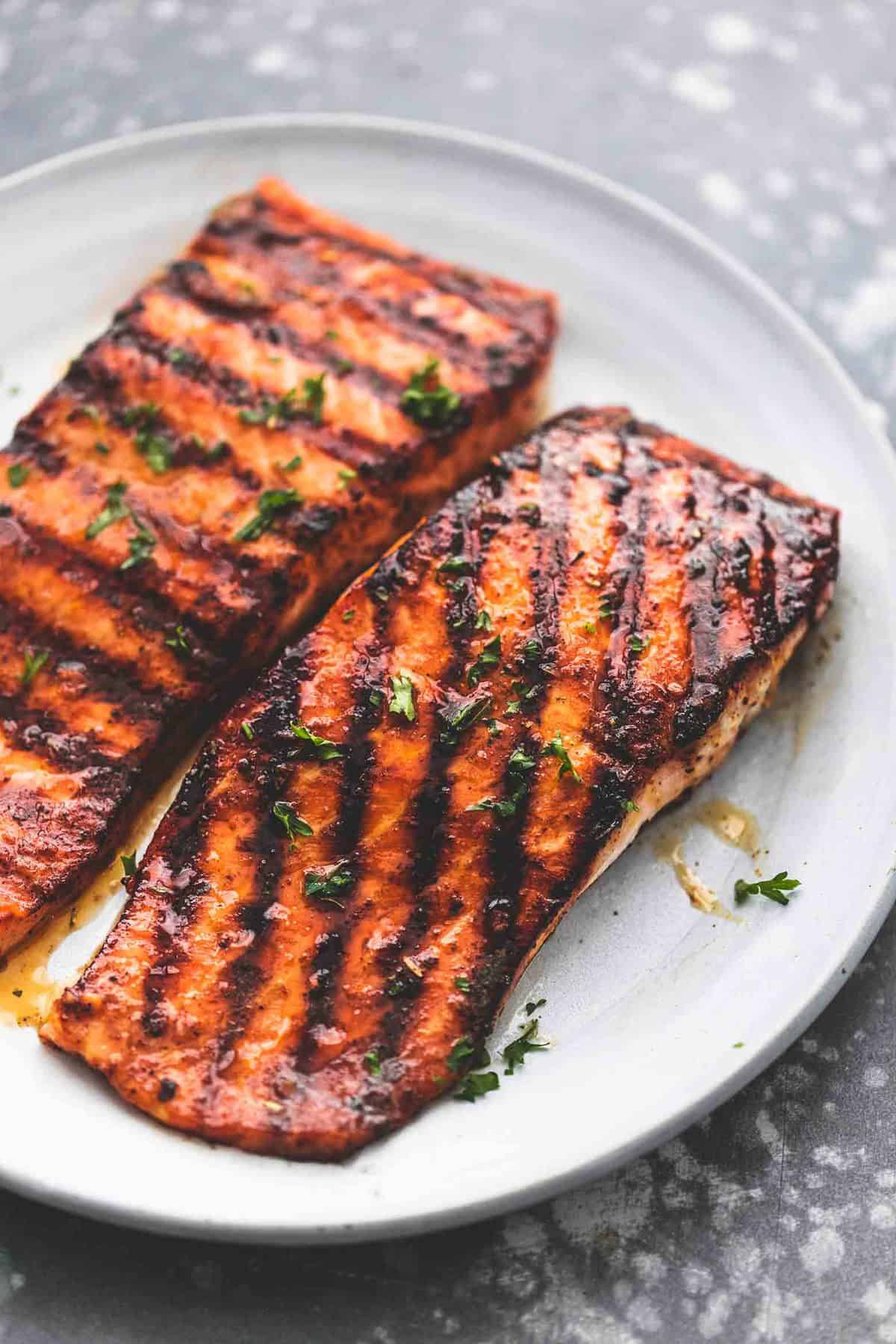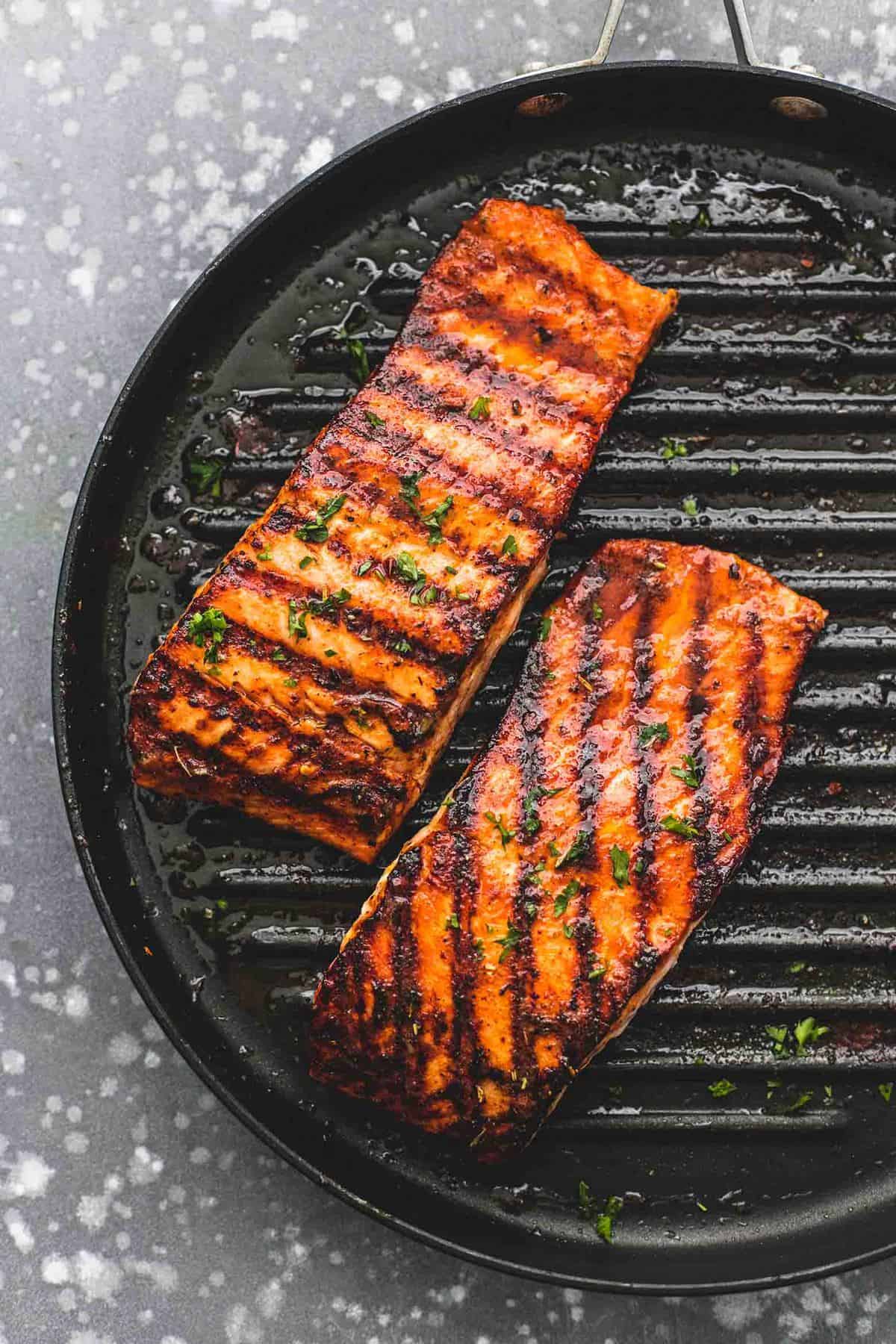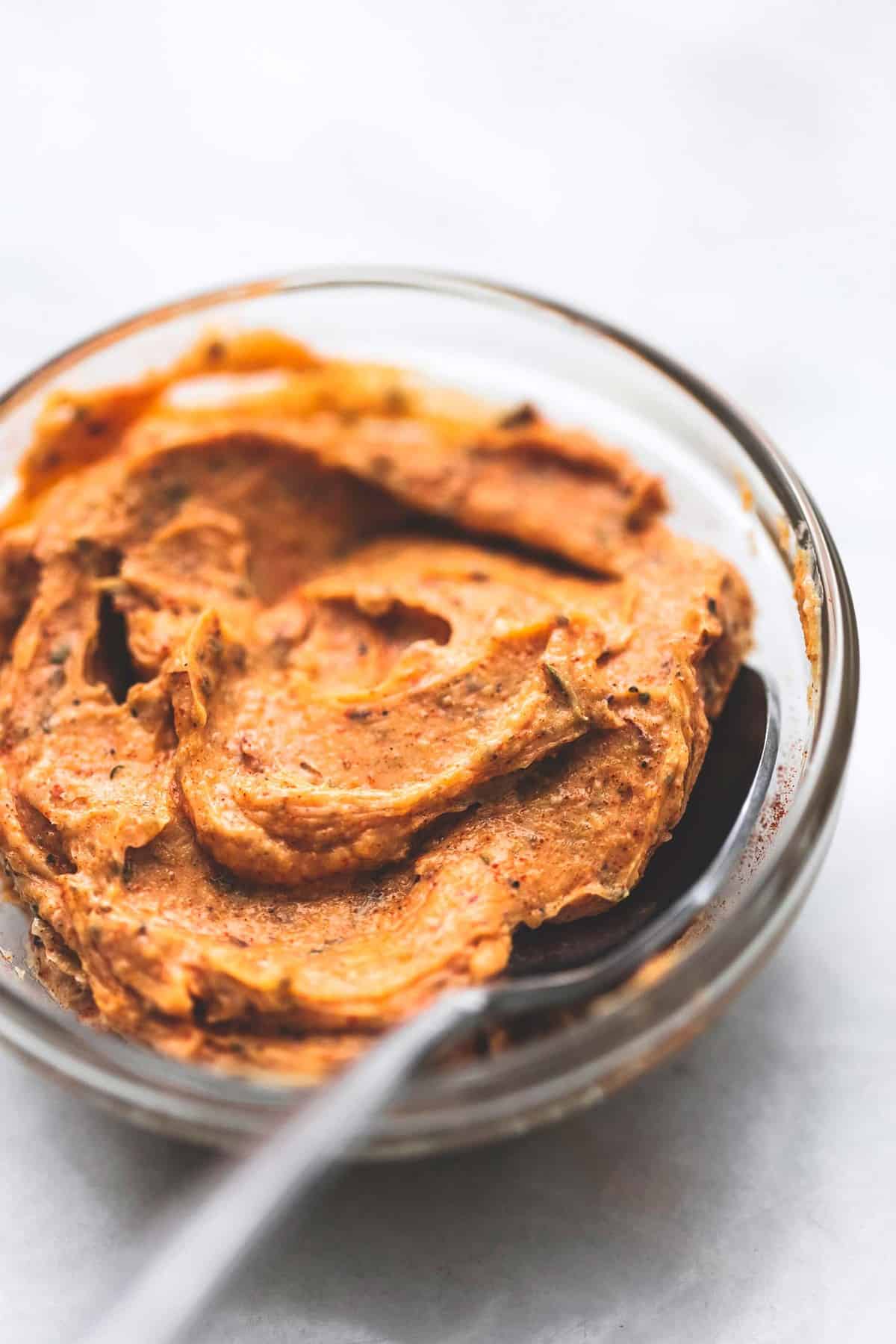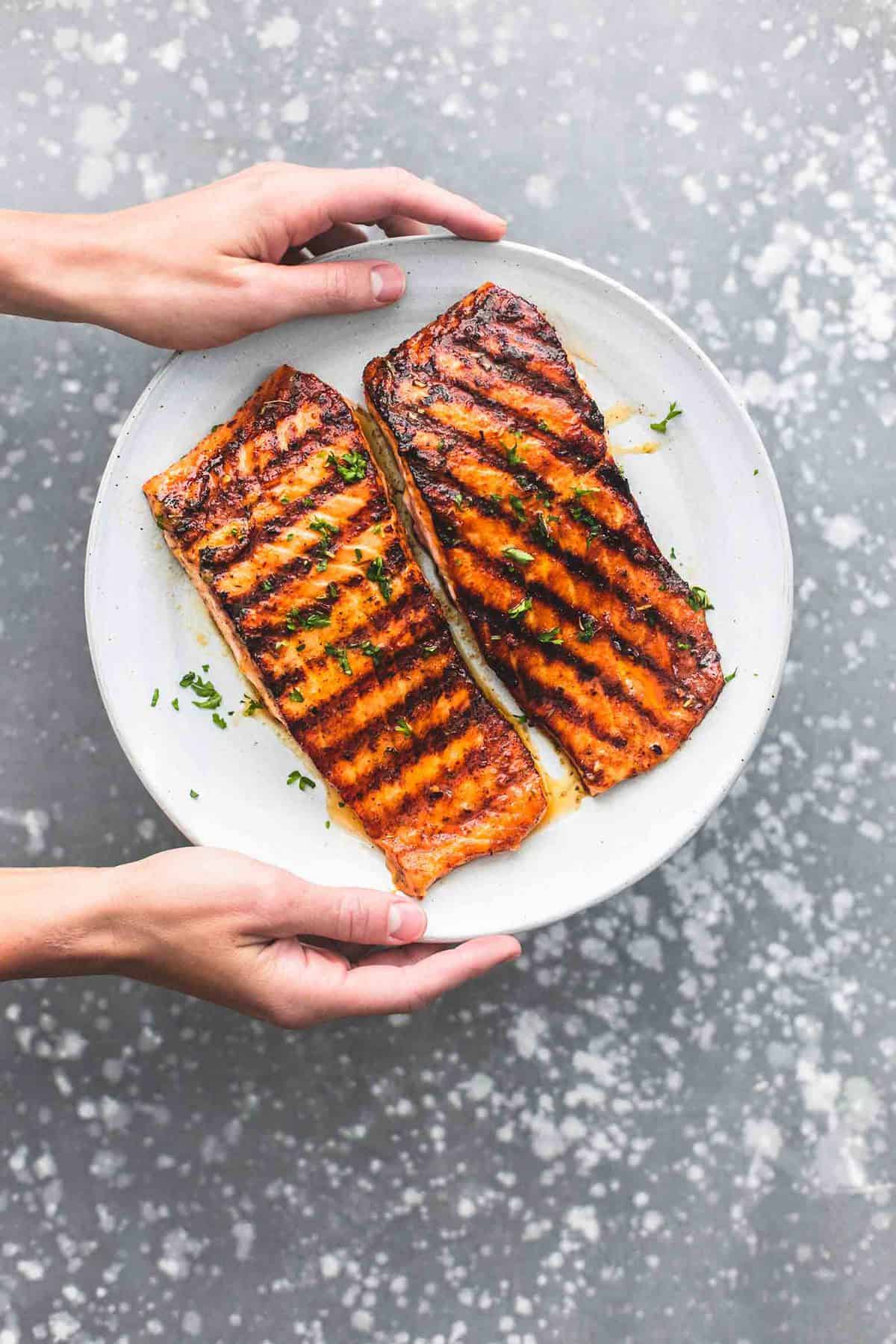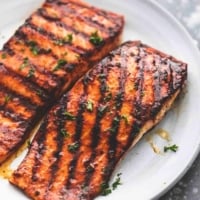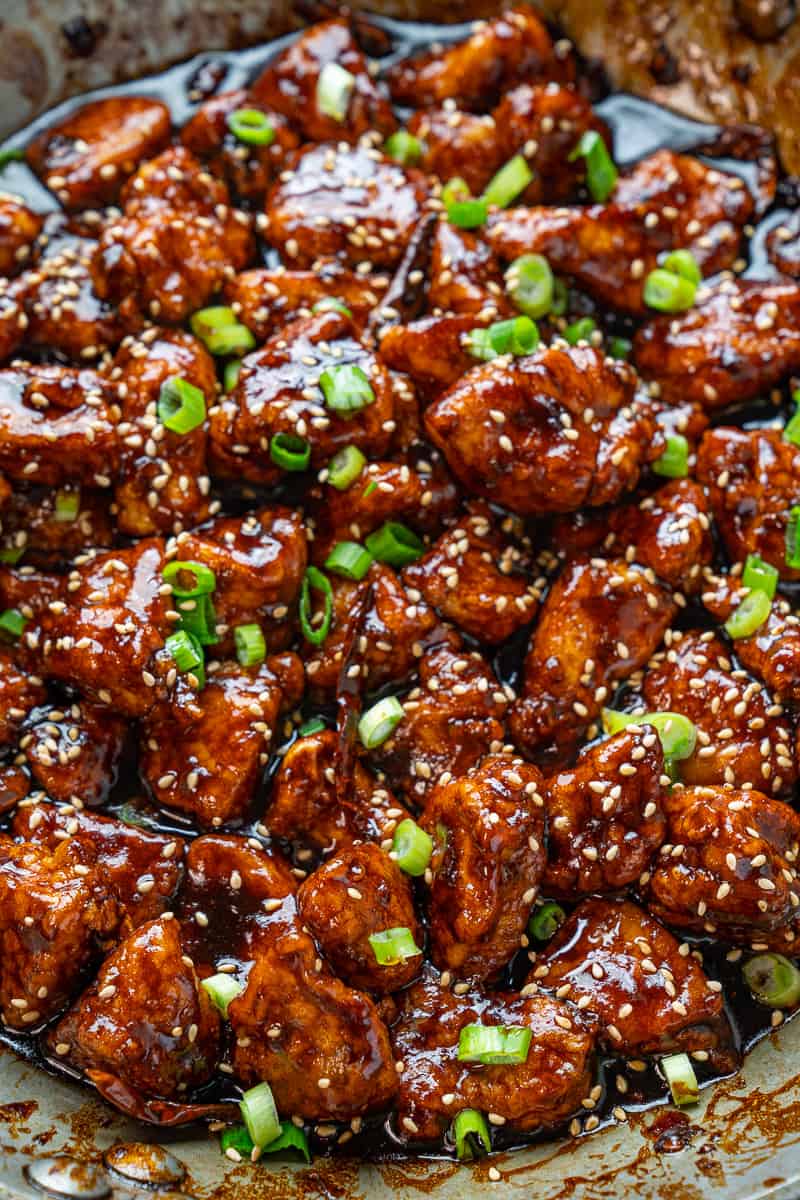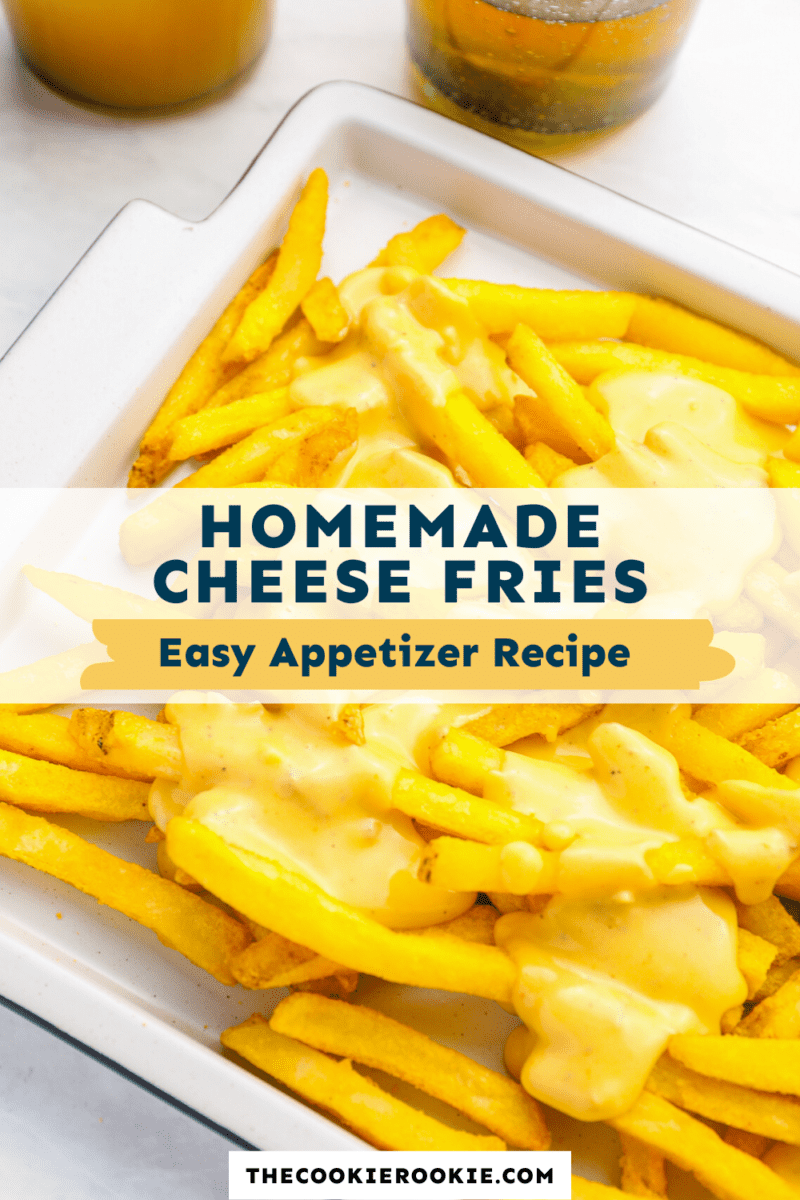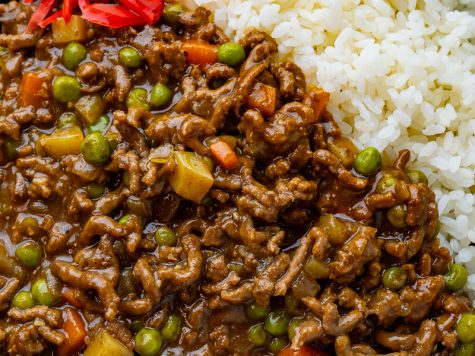This Cajun Honey Butter Grilled Salmon is a spicy and sweet seafood option that’s ready in 15 minutes. The salmon is moist and meaty, cooks up nice and flaky, and then is topped with a melt-in-your-mouth, slightly spicy honey butter that sends your tastebuds to the moon!
For all your salmon lovers out there, you’ll want to bookmark these recipes for the coming weeks: Best Easy Healthy Baked Salmon, Garlic Dijon Shrimp and Salmon Foil Packs, and my Salmon New Orleans.
Oh boy, you guys. It has been warm here in Utah. When it’s warm, I want to fire up the grill. (Which, now that I write that sounds kind of opposite of what I should say.) Mostly, it’s that I want to get outside, away from the oven and stove. I also want to try to eat outside as much as possible, in an effort to try to soak up all that summer down deep in my skin — maybe all the vitamin D will last me at least through the holidays? Could be just wishful thinking.
When I was ready for the grill this time I was all prepared with salmon fillets, a delicious Cajun seasoning, butter, honey, and a few other odds and ends. The great thing about salmon is it grills up so fast and it’s really easy to season, kind of like chicken, but as a stand-in for those days when you’re super bored of eating chicken.
The Cajun spices are easy to get together and you probably wouldn’t be upset with yourself if you made extra and kept on-hand for future recipes (hint, hint). Mixed together with butter and honey, the spices take on another dimension of flavor, both a little hot and a little sweet, and so creamy and delicious when melted on the grilled salmon. I think you’ll agree this recipe is a keeper!
HOW DO YOU MAKE CAJUN SEASONING?
I love making my own spice blends. It’s a good way to use up some of those dry spices you have laying around (who needs that much paprika, anyway?), and, once it’s made, cuts down on seasoning time in the future. Plus, spice blends will keep in your pantry just as long as the individual spices themselves, so you can use them again and again to season poultry, beef, seafood, potatoes, veggies — you name it.
First, what I do is gather up all the dry spices that I’ll need as well as my measuring spoons. Then, I grab a small bowl and get to adding each spice on top of the next. It doesn’t matter the order — they are all going to be mixed together anyway. I’ll stir the spices together with a whisk or a fork and then take out what I need for the honey butter (in this case, I needed 1 tablespoon) and put the rest in a little spice jar or airtight container. A small funnel or a rolled-up piece of paper works well when trying to get the spices back in the jar.
WHAT KIND OF FOOD IS CAJUN?
So, once upon a time a group of French-speaking people were booted out of the Acadian region of Canada and moved to Louisiana. They named their new home “Acadiana” of course. As these new transplants brought and introduced their style of cooking to the region, it became known as Cajun. Generally, its ingredients are locally sourced, simple, and typically consists of some sort of protein, rice, seafood, sausage, and beans and tends to be spicier and contain more peppers than most foods of the region.
SALTED VS. UNSALTED BUTTER — WHAT’S THE DIFFERENCE?
In this recipe (as in a lot of recipes, especially in baked goods), I prefer to use unsalted butter. The reason? Well, mostly it’s because if you put in something unsalted then you’re free to add salt as you see fit. It’s impossible to take out the salt if it’s oversalted and when you start with salted butter, then you add more salt, well, what you’ll end up with is something too gross and salty. (Unless you love all that extra salt, then I guess you can ignore my advice.)
And, because the amount of salt used in each brand of salted butter can vary, I never know what I’ll get from package to package. The ingredients lists don’t really give away any kind of official amount. So, while one salted brand might be great, if you switch, you may be unknowingly adding more salt than you originally intended.
Another reason to use unsalted is because unsalted butter will be fresher. Salt is a preservative, so if you put butter in salt, well, you can keep it there on the shelf for quite a while, as opposed to fresh, unsalted butter, which has a shorter shelf life.
Too much salt can also mask flavors in the foods you’re making. So if you want to taste the spices, then you’re not going to want to overpower your foods with salt.
If all you have is salted butter though, there’s no need to run to the store, you can still use it but I would cut out or lessen any salt also called for in the recipe.
Cajun Honey Butter Grilled Salmon
-
4
salmon fillets - salt and pepper, to taste
-
6
tablespoons
unsalted butter, at room temperature
see note 1 -
3
tablespoons
honey
cajun seasoning
-
2
teaspoons
garlic powder -
2
teaspoons
dried Italian seasoning -
2
teaspoons
paprika
smoked paprika, if you have it -
1
teaspoon
cayenne pepper -
1
teaspoon
onion powder -
1
teaspoon
cracked black pepper
or 1/2 teaspoon finely ground black pepper -
1/2
teaspoon
salt -
1/2
teaspoon
crushed red pepper flakes
-
In a small bowl stir together cajun seasoning ingredients.
-
Use an electric hand mixer to whip butter for 2 minutes until light and fluffy. Add honey and cream together until smooth. Mix in 1 tablespoon of the cajun seasoning. (remaining seasoning can be stored in airtight container up to 3 months)
-
Pat salmon fillets dry on both sides with a paper towel. Rub all over with oil, then season with salt and pepper to taste.
-
Cook salmon on a preheated grill or grill pan for 6-8 minutes on each side until opaque and flaky.
-
Turn off the grill (or stove if using a grill pan) and place a generous dollop of cajun honey butter on top of each fillet.
-
Allow to melt for about 30 seconds, then use the back of a spoon to spread the butter all over the the top of the salmon. Flip, and repeat on the other side.
-
Garnish with chopped cilantro or parsley if desired and serve immediately.
- if using salted butter, do not salt the salmon in step three

